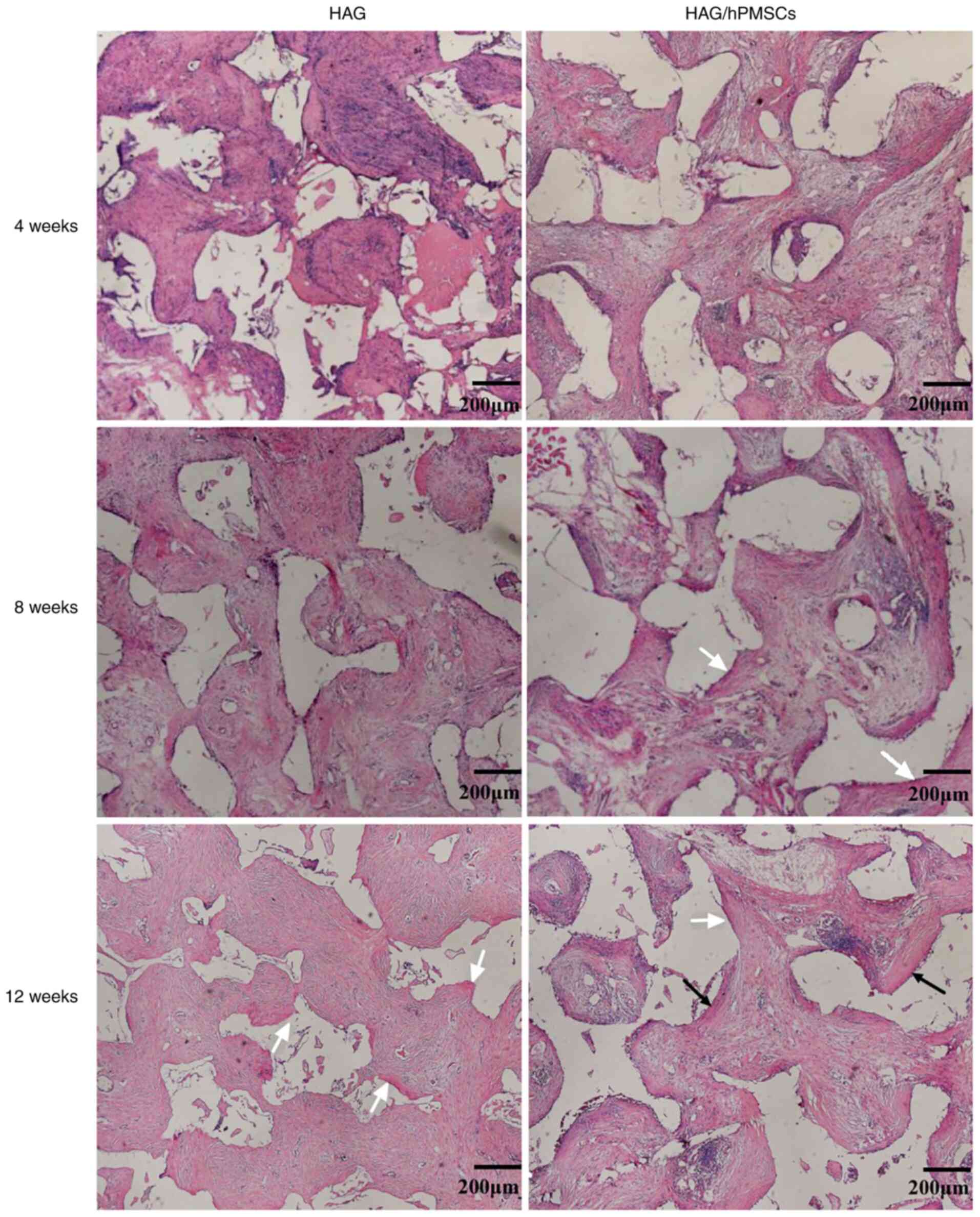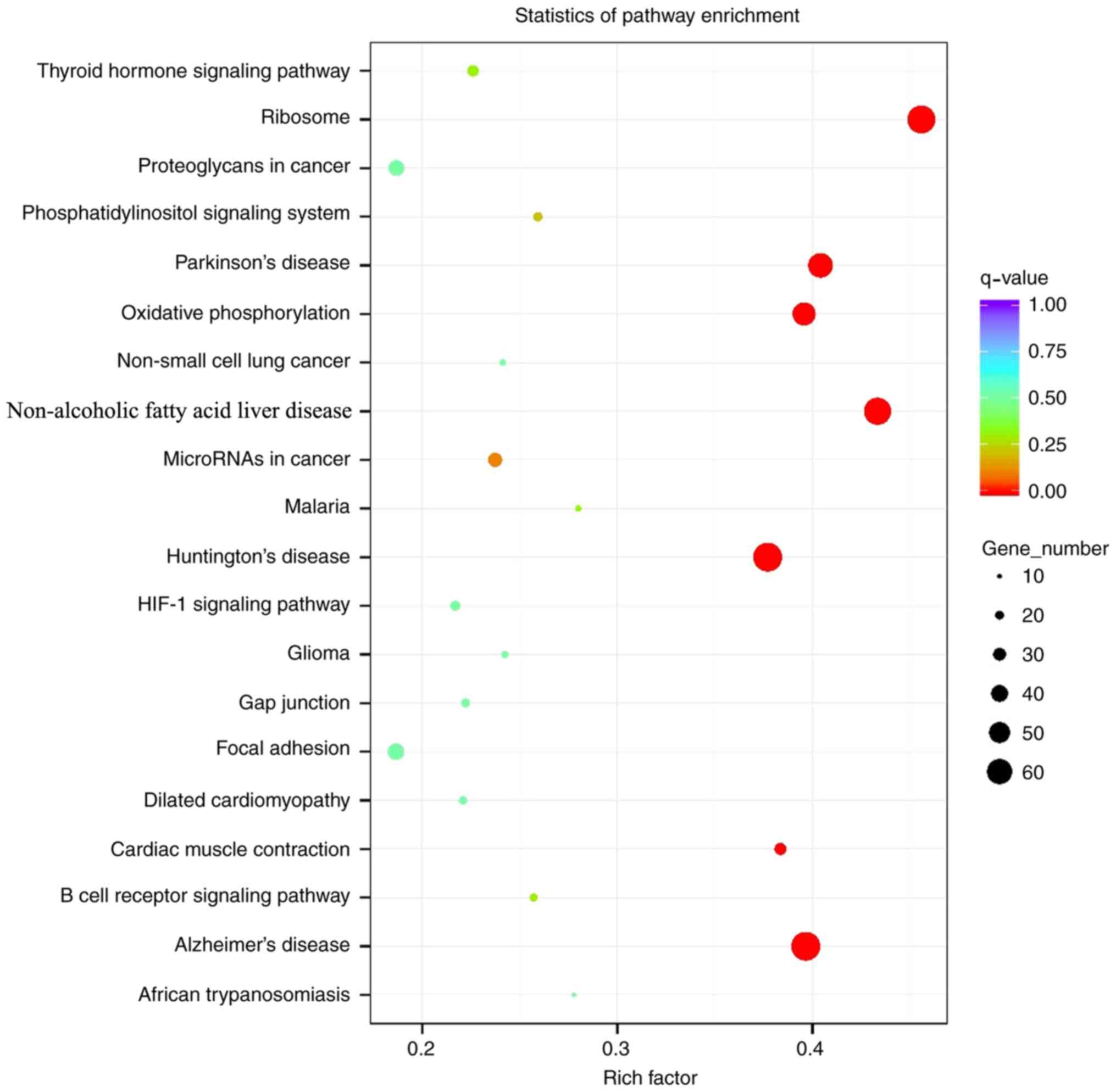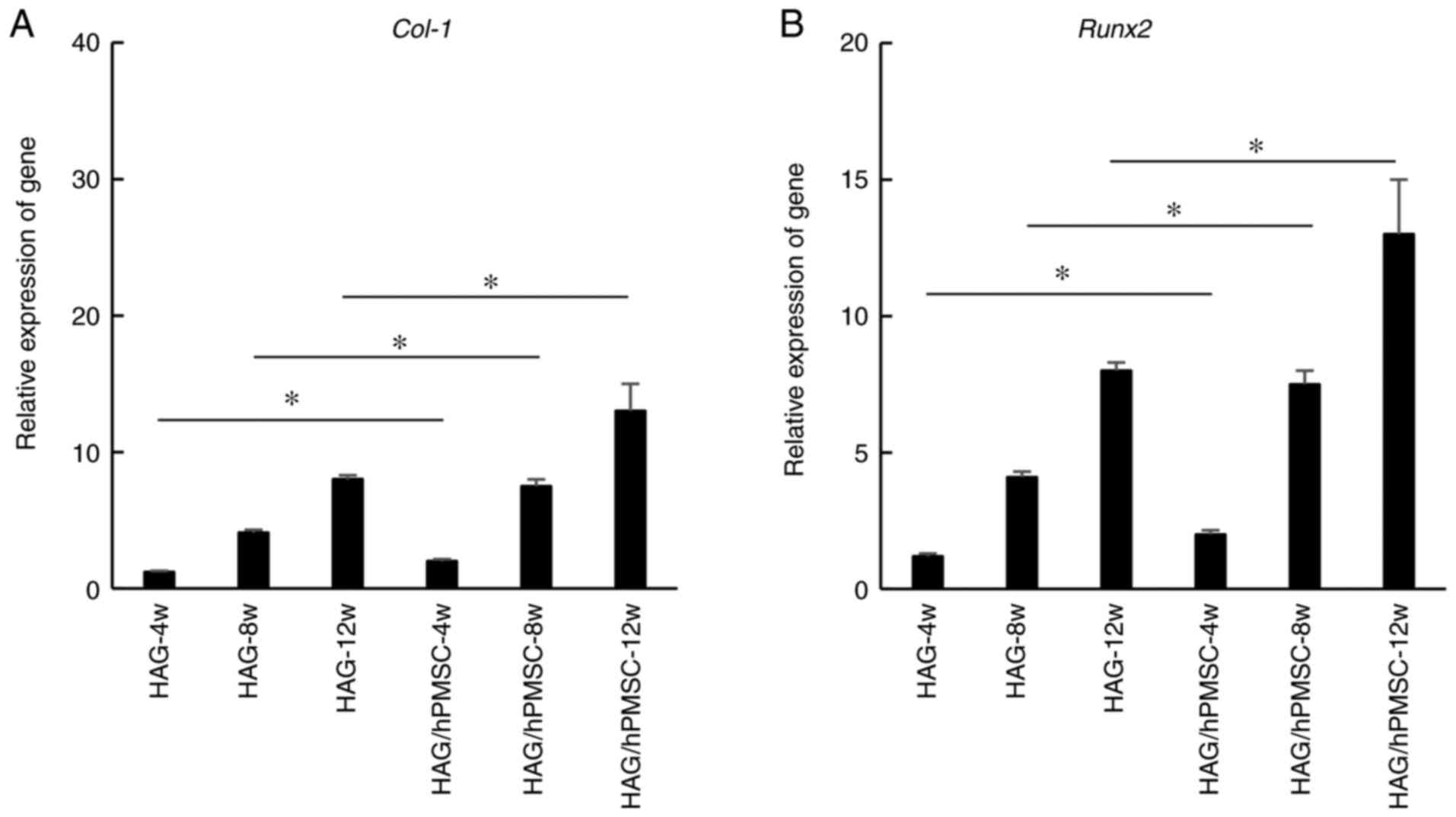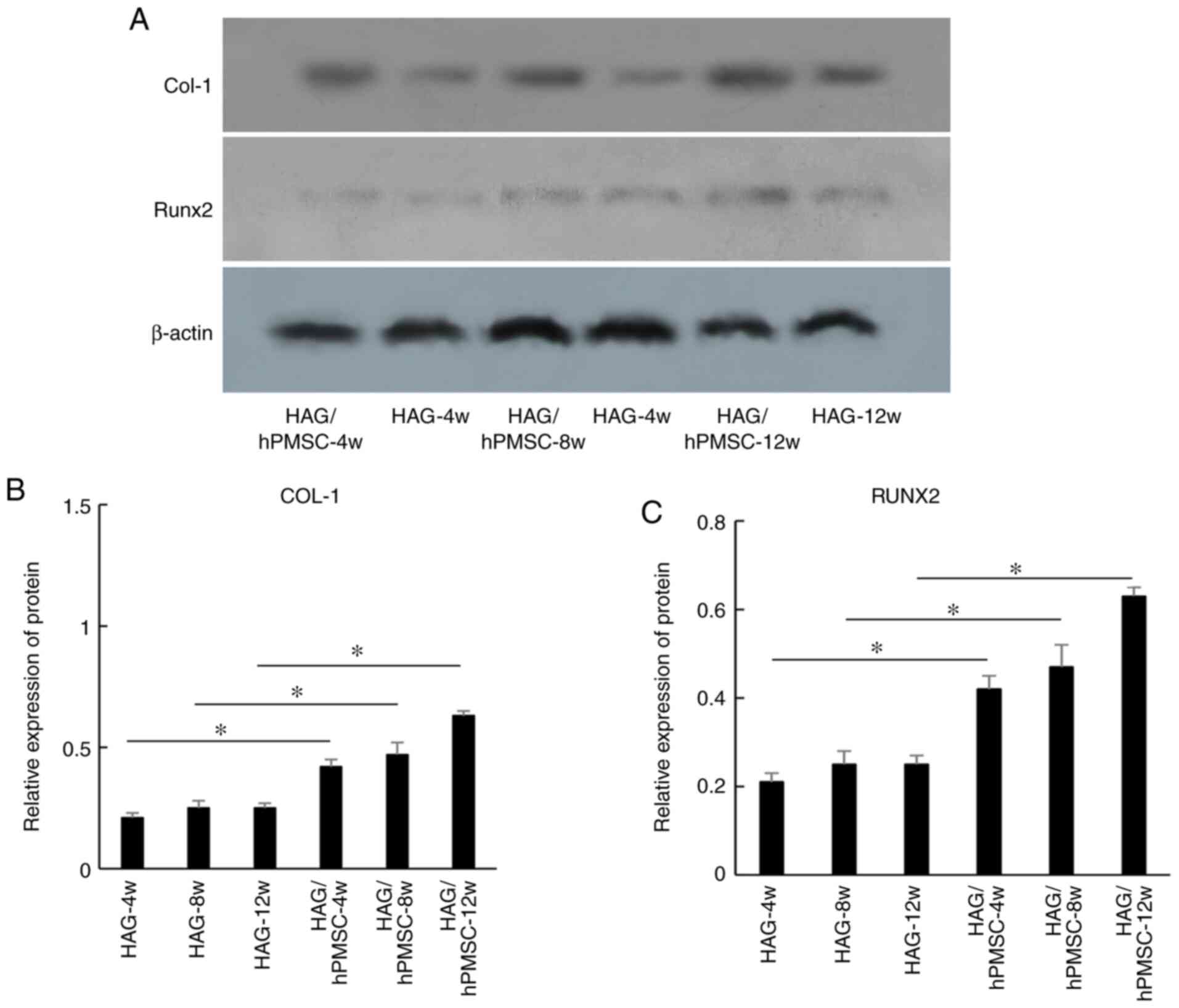|
1
|
Cheng X, Lei D, Mao T, Yang S, Chen F and
Wu W: Repair of critical bone defects with injectable platelet rich
plasma/bone marrow-derived stromal cells composite: Experimental
study in rabbits. Ulus Travma Acil Cerrahi Derg. 14:87–95.
2008.PubMed/NCBI
|
|
2
|
Marx RE, Miller RI, Ehler WJ, Hubbard G
and Malinin TI: A comparison of particulate allogeneic and
particulate autogenous bone grafts into maxillary alveolar clefts
in dogs. J Oral Maxillofac Surg. 42:3–9. 1984.PubMed/NCBI View Article : Google Scholar
|
|
3
|
Janicki P and Schmidmaier G: What should
be the characteristics of the ideal bone graft substitute?
Combining scaffolds with growth factors and/or stem cells. Injury.
42 (Suppl 2):S77–S81. 2011.PubMed/NCBI View Article : Google Scholar
|
|
4
|
Suresh SS, Raniga S, Shanmugam V, George M
and Zaki H: Carpal tunnel syndrome due to hydroxyapatite crystal
deposition disease. J Hand Microsurg. 5:96–99. 2013.PubMed/NCBI View Article : Google Scholar
|
|
5
|
Xiaohua R, Qiang T, Kun T, Huang GT, Li
JY, Xu T, Lv X, Wu J, Chen Z, Weng J, et al: Enhancement of
osteogenesis using a novel porous hydroxyapatite scaffold in vivo
and vitro. Ceram Int. 44:21656–21665. 2018.
|
|
6
|
Wang Z, Gerstein M and Snyder M: RNA-Seq:
A revolutionary tool for transcriptomics. Nat Rev Genet. 10:57–63.
2009.PubMed/NCBI View
Article : Google Scholar
|
|
7
|
Carnes MU, Allingham RR, Ashley-Koch A and
Hauser MA: Transcriptome analysis of adult and fetal trabecular
meshwork, cornea, and ciliary body tissues by RNA sequencing. Exp
Eye Res. 167:91–99. 2018.PubMed/NCBI View Article : Google Scholar
|
|
8
|
Cloonan N, Forrest AR, Kolle G, Gardiner
BB, Faulkner GJ, Brown MK, Taylor DF, Steptoe AL, Wani S, Bethel G,
et al: Stem cell transcriptome profiling via massive-scale mRNA
sequencing. Nat Methods. 5:613–619. 2008.PubMed/NCBI View Article : Google Scholar
|
|
9
|
Mortazavi A, Williams BA, McCue K,
Schaeffer L and Wold B: Mapping and quantifying mammalian
transcriptomes by RNA-Seq. Nat Methods. 5:621–628. 2008.PubMed/NCBI View Article : Google Scholar
|
|
10
|
Trapnell C, Williams BA, Pertea G,
Mortazavi A, Kwan G, van Baren MJ, Salzberg SL, Wold BJ and Pachter
L: Transcript assembly and quantification by RNA-Seq reveals
unannotated transcripts and isoform switching during cell
differentiation. Nat Biotechnol. 28:511–515. 2010.PubMed/NCBI View
Article : Google Scholar
|
|
11
|
Guttman M, Garber M, Levin JZ, Donaghey J,
Robinson J, Adiconis X, Fan L, Koziol MJ, Gnirke A, Nusbaum C, et
al: Ab initio reconstruction of cell type-specific transcriptomes
in mouse reveals the conserved multi-exonic structure of lincRNAs.
Nat Biotechnol. 28:503–510. 2010.PubMed/NCBI View
Article : Google Scholar
|
|
12
|
Satija NK, Sharma D, Afrin F, Tripathi RP
and Gangenahalli G: High throughput transcriptome profiling of
lithium stimulated human mesenchymal stem cells reveals priming
towards osteoblastic lineage. PLoS One. 8(e55769)2013.PubMed/NCBI View Article : Google Scholar
|
|
13
|
Dominici M, Le Blanc K, Mueller I,
Slaper-Cortenbach I, Marini F, Krause D, Deans R, Keating A,
Prockop DJ and Horwitz E: Minimal criteria for defining multipotent
mesenchymal stromal cells. The international society for cellular
therapy position statement. Cytotherapy. 8:315–317. 2006.PubMed/NCBI View Article : Google Scholar
|
|
14
|
Squillaro T, Peluso G and Galderisi U:
Clinical trials with mesenchymal stem cells: An Update. Cell
Transplant. 25:829–848. 2016.PubMed/NCBI View Article : Google Scholar
|
|
15
|
Alessio N, Squillaro T, Özcan S, Di
Bernardo G, Venditti M, Melone M, Peluso G and Galderisi U: Stress
and stem cells: adult Muse cells tolerate extensive genotoxic
stimuli better than mesenchymal stromal cells. Oncotarget.
9:19328–19341. 2018.PubMed/NCBI View Article : Google Scholar
|
|
16
|
Fathi E and Farahzadi R: Zinc sulphate
mediates the stimulation of cell proliferation of rat adipose
tissue-derived mesenchymal stem cells under high intensity of EMF
exposure. Biol Trace Elem Res. 184:529–535. 2017.PubMed/NCBI View Article : Google Scholar
|
|
17
|
Fathi E, Farahzadi R and Sheikhzadeh N:
Immunophenotypic characterization, multi-lineage differentiation
and aging of zebrafish heart and liver tissue-derived mesenchymal
stem cells as a novel approach in stem cell-based therapy. Tissue
Cell. 57:15–21. 2019.PubMed/NCBI View Article : Google Scholar
|
|
18
|
Lim J, Lee J, Yun HS, Park EK and Shin HI:
Comparison of bone regeneration rate in flat and long bone defects:
Calvarial and tibial bone. Tissue Eng Regene Med. 10:336–340.
2013.
|
|
19
|
Lin YH, Chen CY, Chou LY, Chen CH, Kang L
and Wang CZ: Enhancement of bone marrow-derived mesenchymal stem
cell osteogenesis and new bone formation in rats by obtusilactone
A. Int J Mol Sci. 18(2422)2017.PubMed/NCBI View Article : Google Scholar
|
|
20
|
Livak KJ and Schmittgen TD: Analysis of
relative gene expression data using real-time quantitative PCR and
the 2(-Delta Delta C(T)) method. Methods. 25:402–408.
2002.PubMed/NCBI View Article : Google Scholar
|
|
21
|
Wang YG, Han XG, Yang Y, Qiao H, Dai KR,
Fan QM and Tang TT: Functional differences between AMPK alpha1 and
alpha2 subunits in osteogenesis, osteoblast-associated induction of
osteoclastogenesis, and adipogenesis. Sci Rep.
6(32771)2016.PubMed/NCBI View Article : Google Scholar
|
|
22
|
Shu C, Zhao M, Anderson JP, Garg G, Singh
KB, Zheng W, Wang C, Yang M and Zhou E: Transcriptome analysis
reveals molecular mechanisms of sclerotial development in the rice
sheath blight pathogen Rhizoctonia solani AG1-IA. Funct Integr
Genomics. 19:743–758. 2015.PubMed/NCBI View Article : Google Scholar
|
|
23
|
Liu Z, Yin X, Ye Q, He W and Zou S:
Periodontal regeneration with stem cells-seeded
collagen-hydroxyapatite scaffold. J Biomater Appl.
31(121)2016.PubMed/NCBI View Article : Google Scholar
|
|
24
|
Wang G, Yang H, Li M, Lu S, Chen X and Cai
X: The use of silk fibroin/hydroxyapatite composite co-cultured
with rabbit bone-marrow stromal cells in the healing of a segmental
bone defect. Bone Joint Surg Br. 92:320–325. 2010.PubMed/NCBI View Article : Google Scholar
|
|
25
|
Diao Y, Ma Q, Cui F and Zhong Y: Human
umbilical cord mesenchymal stem cells: Osteogenesis in vivo as seed
cells for bone tissue engineering. J Biomed Mater Res Part A.
91A:123–131. 2010.PubMed/NCBI View Article : Google Scholar
|
|
26
|
Liu Z, Yin X, Ye Q, He W, Ge M, Zhou X, Hu
J and Zou S: Periodontal regeneration with stem cells-seeded
collagen-hydroxyapatite scaffold. J Biomater Appl. 31:121–131.
2016.PubMed/NCBI View Article : Google Scholar
|
|
27
|
Zhou L, Chen J, Li Z, Li X, Hu X, Huang Y,
Zhao X, Liang C, Wang Y, Sun L, et al: Integrated profiling of
microRNAs and mRNAs: microRNAs located on Xq27.3 associate with
clear cell renal cell carcinoma. PLoS One. 5(e15224)2010.PubMed/NCBI View Article : Google Scholar
|
|
28
|
Hung SC, Pochampally RR, Chen SC, Hsu SC
and Prockop DJ: Angiogenic effects of human multipotent stromal
cell conditioned medium activate the PI3K-Akt pathway in hypoxic
endothelial cells to inhibit apoptosis, increase survival, and
stimulate angiogenesis. Stem Cells. 25:2363–2370. 2007.PubMed/NCBI View Article : Google Scholar
|
|
29
|
Wang YG, Qu XH, Yang Y, Han XG, Wang L,
Qiao H, Fan QM, Tang TT and Dai KR: AMPK promotes osteogenesis and
inhibits adipogenesis through AMPK-Gfi1-OPN axis. Cell Signal.
28:1270–1282. 2016.PubMed/NCBI View Article : Google Scholar
|
|
30
|
Gupta V, Shah MA, Shah SK and Shah JM:
Osteoanabolics. Indian J Endocrinol Metab. 6:349–357.
2012.PubMed/NCBI View Article : Google Scholar
|
|
31
|
Zheng J, Mao X, Ling J, Chen C and Zhang
W: Role of magnesium transporter subtype 1 (MagT1) in the
osteogenic differentiation of rat bone marrow stem cells. Biol
Trace Elem Res. 171:131–137. 2016.PubMed/NCBI View Article : Google Scholar
|
|
32
|
Cui CB, Cooper LF, Yang X, Karsenty G and
Aukhil I: Transcriptional coactivation of bone-specific
transcription factor Cbfa1 by TAZ. Mol Cell Biol. 23:1004–1013.
2003.PubMed/NCBI View Article : Google Scholar
|
|
33
|
Kwun IS, Cho YE, Lomeda RA, Shin HI, Choi
JY, Kang YH and Beattie JH: Zinc deficiency suppresses matrix
mineralization and retards osteogenesis transiently with catch-up
possibly through Runx 2 modulation. Bone. 46:732–741.
2010.PubMed/NCBI View Article : Google Scholar
|


















